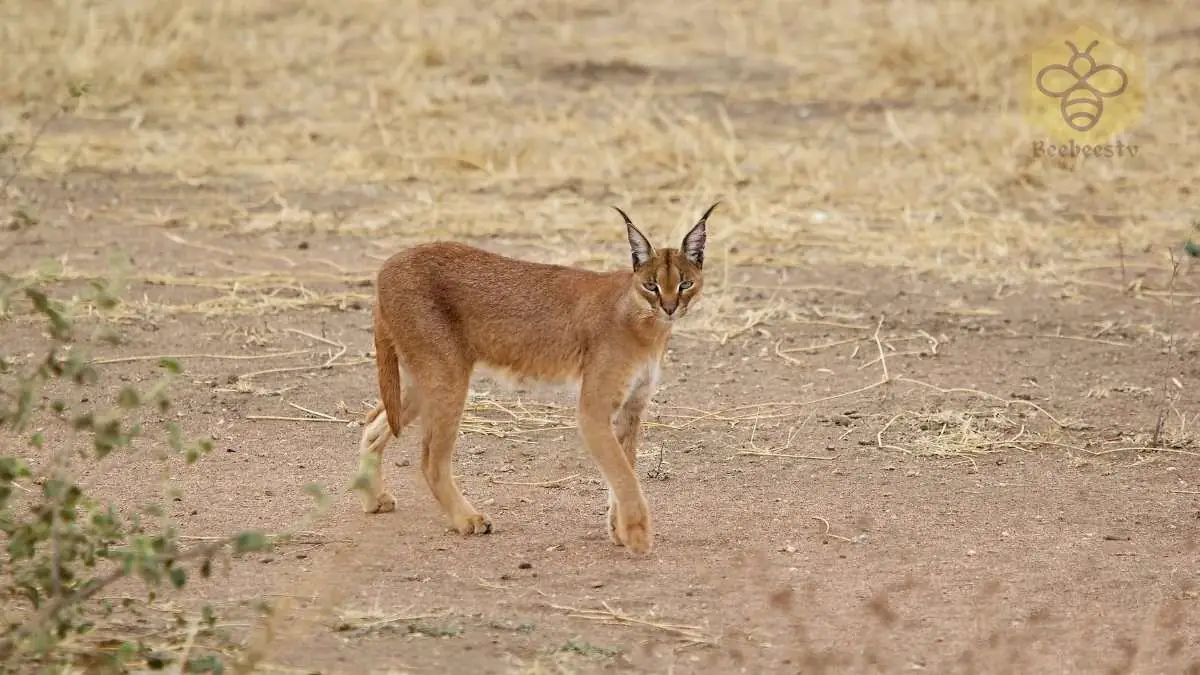Caracal: The Agile and Mysterious Wild Cat
Caracal
Introduction
The caracal is a striking and elusive wild cat known for its incredible agility, tufted ears, and exceptional hunting skills. Often referred to as the “desert lynx,” this medium-sized feline is native to Africa, the Middle East, and parts of Asia. Despite its resemblance to lynxes, the caracal is a distinct species with unique characteristics.
Scientific Overview
Scientific Name
Caracal caracal
Common Name
Caracal
Scientific Classification
| Kingdom | Animalia |
| Phylum | Chordata |
| Class | Mammalia |
| Order | Carnivora |
| Family | Felidae |
| Genus | Caracal |
| Species | Caracal caracal |
Types of Caracals
Caracals are not divided into distinct subspecies, but regional variations exist based on their habitats.
Habitat and Distribution
Caracals are highly adaptable and can thrive in various environments, including:
- Dry savannas
- Woodlands
- Semi-deserts
- Grasslands
- Mountainous regions
They are native to regions across Africa, the Middle East, and parts of Central and South Asia. These stealthy cats prefer areas with dense vegetation or rocky terrains where they can hide and ambush prey.
Physical Characteristics
Size and Weight
- Body Length: 24–42 inches (61–107 cm)
- Tail Length: 8–13 inches (20–34 cm)
- Height at Shoulder: 16–20 inches (40–50 cm)
- Weight: 15–40 lbs (7–18 kg), with males being larger than females
Appearance
- Golden-reddish coat – Helps with camouflage in dry environments.
- Black ear tufts – Long, distinctive tufts that aid in communication and camouflage.
- Muscular body and long legs – Allow for powerful leaps and sprints.
- Sharp retractable claws – Essential for climbing and capturing prey.
Diet and Feeding Habits
Caracals are carnivorous and opportunistic hunters. Their diet includes:
- Small to medium-sized mammals (rodents, rabbits, hares)
- Birds (especially ground-dwelling species)
- Reptiles
- Occasionally, larger prey such as young antelope
Caracals are exceptional jumpers, capable of leaping up to 10 feet (3 meters) high to snatch birds mid-flight. They use their stealth and speed to ambush prey, often killing with a swift bite to the neck.
Predators and Threats
Despite being skilled hunters, caracals face several threats, including:
- Larger predators: Lions, hyenas, leopards, and wild dogs.
- Human-related threats: Habitat destruction, hunting, and retaliatory killings by farmers who see them as threats to livestock.
Caracals are known to raid poultry farms, which has led to conflicts with humans.
Reproduction, Babies, and Lifespan
- Breeding season: Year-round, peaking in winter and spring.
- Gestation period: 69–81 days.
- Litter size: 1–6 kittens.
- Weaning age: 10 weeks.
- Lifespan: 12–15 years in the wild, up to 20 years in captivity.
Caracal kittens are born blind and rely on their mothers for protection and food until they are strong enough to hunt independently.
Population and Conservation Status
- IUCN Red List Status: Least Concern (Stable population)
- Threats: Habitat loss, human-wildlife conflict, and poaching.
- Conservation Efforts: Protected in some areas, but habitat conservation is crucial for their survival.
Behavior and Lifestyle
- Solitary animals – Except during mating season or when mothers care for kittens.
- Nocturnal and crepuscular – Most active at night and dawn.
- Territorial – Mark their territories with scent markings.
- Silent hunters – Rely on stealth rather than chasing prey over long distances.
Ecological Role
Caracals help control populations of rodents, birds, and small mammals, maintaining balance in their ecosystems. As apex mesopredators, they play a vital role in preventing the overpopulation of prey species.
FAQs About Caracals
1. Are caracals dangerous to humans?
Caracals are generally not a threat to humans unless provoked. However, they are wild animals and should not be approached.
2. Can caracals be kept as pets?
Some people try to keep caracals as exotic pets but require special care and are best left in the wild. In many countries, owning a caracal is illegal.
3. Why do caracals have ear tufts?
The black tufts help with camouflage, communication, and detecting movement.
4. How high can a caracal jump?
Caracals can leap up to 10 feet (3 meters) high, allowing them to catch birds in midair.
5. Do caracals make sounds?
Yes, caracals communicate with hisses, growls, and meows, similar to domestic cats.
Conclusion
The caracal is a fascinating and highly skilled predator, known for its agility, intelligence, and adaptability. Despite facing threats from human activities, these wild cats continue to thrive across their native ranges. Their role in controlling prey populations makes them an essential part of the ecosystem. By understanding and protecting these elusive felines, we can ensure their survival for future generations.
